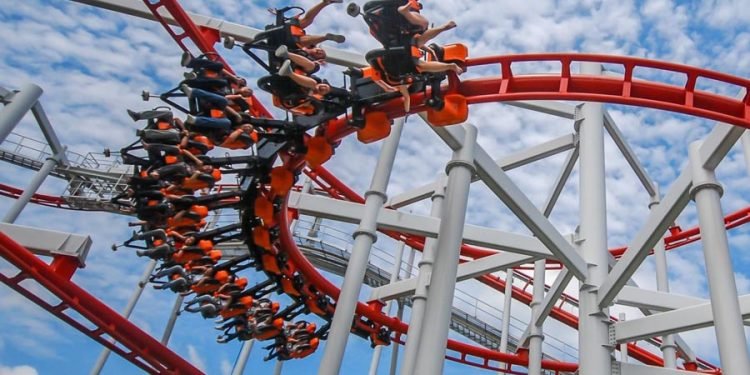Entertainment parks offer exciting thrills and unforgettable experiences, but what often go unseen are the unique risks and liabilities associated with their operation. To safeguard a business from costly financial claims and ensure visitors remain safe, it’s essential to understand the basics of amusement and entertainment insurance. This article will explain the types of coverage needed, the dangers associated with running an amusement park, as well as the benefits of having protective insurance in place. With a well-informed approach, both sides of the equation can be successfully managed for adrenalin-pumping fun.
Dangers associated with running an amusement park and how to avoid them.
Managing an amusement park can be a thrilling and financially rewarding endeavor, yet it also carries significant risks. Safety should always be the utmost priority, as mishaps can have dire repercussions, such as bodily harm, legal action, and a tarnished reputation. Here are some of the dangers typically associated with operating this type of business:
1. Ride malfunctions.
Ride malfunctions can have devastating consequences, from physical harm to even fatalities. Many components may be responsible for these malfunctions, such as mechanical issues, design flaws, and human mistakes. In order to reduce the occurrence of incidents, amusement parks must commit to ongoing maintenance of rides, combined with safety evaluations and inspections. Maintenance should address any mechanical issues, while safety testing ought to discover and remedy problems linked to design errors or human errors. By proactively diminishing prospective risks prior to an incident happening, the possibility of a damaging malfunction will be drastically diminished. Furthermore, amusement parks should ensure trained personnel are constantly present in order to react quickly to possible malfunctions. These individuals must possess enough knowledge and resources to successfully deal with any emergency situation.
2. Inadequate staff training
Adequate staff training is paramount to upholding the safety of park guests and personnel. Park administrators should guarantee employees have a thorough knowledge of rides and facility operations, including inspection techniques and preservation practices. Moreover, staff members must be instructed on how to recognize likely risks in the amusement park setting and also how to correctly deal with any potential problems that could arise. Moreover, employees ought to receive guidance on suitable emergency response strategies, including evacuating patrons quickly and safely. Without appropriate preparation, park administrators run the risk of jeopardizing both park-goer’s and worker’s well-being, as well as endangering their business’s prosperity.
3. Guest misconduct
Guests must adhere to strict safety protocols when visiting amusement parks. Clear signage should be prominently displayed in highly-trafficked areas to ensure guests know the correct regulations, such as maintaining their position within marked pathways, walking rather than running, and respecting speed limits. Additionally, ride operators must have a comprehensible method for monitoring guest behavior both on rides and while waiting in line, ensuring that all procedures are followed correctly. Security guards can also roam queues informing visitors of regulations and protecting those who abide by them. By strictly following these rules, the chances of an incident occurring are greatly reduced.
Benefits of having protective insurance in place.
Here are some of the benefits of having protective insurance in place for an amusement park:
1. Liability protection
Protecting against liability is a critical component of running an amusement park efficiently. Without such coverage, the park might be subject to eye-watering expenditure when someone is harmed in the vicinity. This type of insurance offers some reprieve from those costs, supplying reassurance for proprietors and visitors. Along with covering any legal costs that could emanate from an incident or personal injury, liability insurance can also guarantee compliance with safety requirements in order to stop incidents from taking place in the first place. Therefore, it is fundamental for any establishment that routinely encounters the general public to have proper liability coverage on hand.
2. Property damage coverage
Property damage coverage is an indispensable form of protective insurance for amusement parks, safeguarding them from the financial peril of accidents or natural disasters that could harm valuable equipment or rides. Such insurance coverage can help cover the costs of repairs and replacements, allowing the park to avoid bearing the entire expense on its own. In addition, property damage coverage can also provide defense against losses caused by theft, vandalism, and malicious acts. By taking preventative measures through this type of protection, amusement parks can reduce any disruption caused by potential incidents.
3. Protection against lawsuits
Amusement parks must take steps to guard against the possibility of legal action. If a guest sustains an injury during their visit, they may opt to file a lawsuit in order to obtain recompense for their damages. Utilizing insurance coverage to protect against a possible legal battle can prove invaluable and not only covers the fees incurred while defending the park in such cases, but also any potential settlements or judgments that may be made against the park. Through this safety measure, amusement parks can safeguard themselves from potentially crippling financial losses arising from accidents deemed unavoidable or unpredictable.
Protecting an amusement park with insurance is key to preventing losses and guaranteeing success. From protective measures against liabilities to providing long-term security, the right policy today ensures a safe and prosperous tomorrow. Making the investment now lets park operators prioritize guests without worrying about potential risks in the future.












